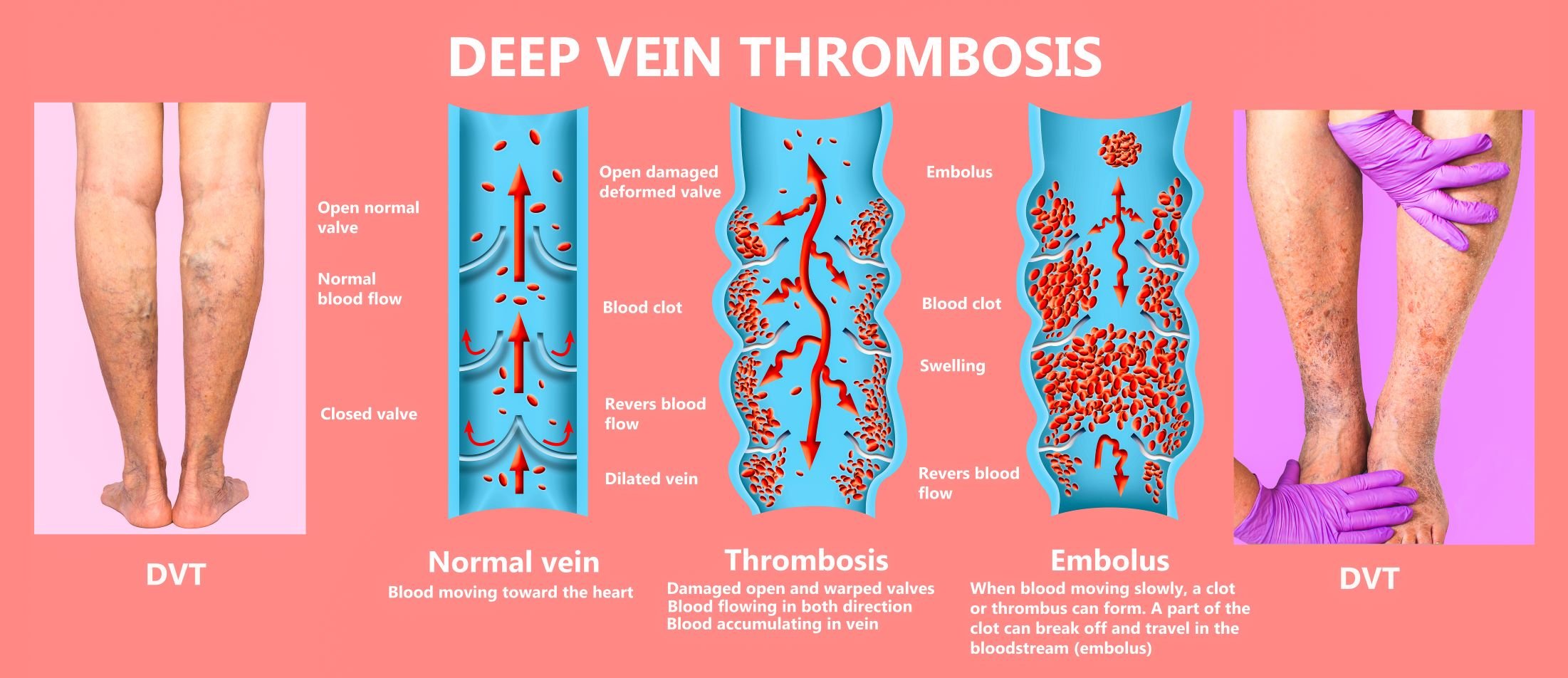DVT Awareness Month
March is National Deep Vein Thrombosis (DVT) Awareness Month. DVTs are blood clots that form in a deep vein 一 often in a muscle in your leg 一 and, left untreated, they can lead to serious and potentially life-threatening conditions such as pulmonary embolisms. Because DVTs can lead to serious complications, National DVT Awareness Month is an initiative designed to raise awareness of DVTS, including what causes them, signs you need treatment, and how to prevent them.
This March, our team of experienced providers at Vein Institute is here to raise awareness so you can learn to spot the signs of DVT and learn when to seek medical care.
What is DVT?
A DVT is a blood clot (thrombus) that forms in a deep vein. Although they often develop in the legs, they can form in your arm too. Anything that compromises proper blood flow in your veins can increase your risk of developing a DVT, including:
Damage to a vein during surgery
Inflammation from an infection or injury
Blood clotting disorders
Not moving enough (i.e., being bedridden after a surgery or accident)
Other risk factors for DVT include smoking, being overweight, cancer, age, genetics, and pregnancy.
4 Tell-Tale Symptoms of DVT
On its own, a blood clot in your vein isn’t life-threatening. However, it becomes life-threatening if it breaks away and travels to your lungs, where it can cause a pulmonary embolism. Although DVTs can occur without noticeable symptoms, the four most common symptoms are:
Swelling in the affected leg
Pain and cramping in your calf
Redness or discolored skin on the affected leg
A feeling of warmth in your leg
Note: pulmonary embolisms are a medical emergency, and if you suspect you or a loved one are having one, CALL 9-1-1. Signs of pulmonary embolisms are sudden chest pain when inhaling, difficulty breathing, rapid breathing, and coughing up blood.
Exploring Your DVT Treatment Options
When our team treats DVTs, we have three goals:
To stop the clot from getting bigger
To prevent the clot from breaking loose
To prevent future DVTs
Depending on your specific needs, treatment options may include medications (blood-thinning medications as well as clot-busters) and compression stockings.
Can You Prevent DVT?
Prevention is the best defense when it comes to DVTs, and thankfully, there are many steps you can take to prevent future blood clots. The best strategies for reducing your risk of blood clots include:
Avoid Prolonged Sitting
Sitting still for hours at a time isn’t good for your veins. This includes sitting in a car for a road trip, sitting at a desk for hours on end, traveling in an airplane, and being on bedrest. Try to avoid prolonged hours of sitting. If you’ve just had surgery or are on bedrest, follow your provider’s instructions for moving as soon as possible. Although you might not feel like walking right after surgery, movement is a great defense against blood clots.
If you’re sedentary at work, set a timer and get up and move every hour. Take a quick walk on your lunch break, or use the stairs instead of the elevator. For traveling, take frequent rest stops to get up and stretch, or if you're on a plane, stand and stretch when permitted.
2. Stay Active
In addition to avoiding prolonged sitting, it’s important to exercise regularly. Walking, for example, is one of the best exercises that supports your vascular system.
3. Maintain a Healthy Weight
Obesity and being overweight are two risk factors DVTs. Maintaining a healthy weight is one way to reduce one of the DVT risk factors that are within your control.
4. Stop Smoking
Smoking is notorious for causing lung issues, but the reality is that it impacts your entire body, including your vascular system. If you’re smoking, consider smoking cessation programs to help you quit.
Follow all treatments for vein disease
If you’re already undergoing treatment for vein disease, keep up the good work. For example, if you’re prescribed compression stockings, keep wearing them as directed. If you have questions or need to order new stockings, don’t hesitate to reach out to us!
What Can You Do for DVT Awareness Month?
This March, make it a goal to adopt as many vein-friendly habits as you can. Can you add an extra walk into your evening routine? Can you set a timer for a mid-morning leg stretching session? Any little habit helps!
Need to schedule an appointment? Call the nearest Vein Institute office or simply request your appointment online and put your vascular health first.
“I had several bulging and varicose veins in my leg that I ignored for several years. Had consultations at other vein offices but when I met the staff and doctors at Vein Institute a knew immediately that I wanted to have my vein issues resolved here.
Everyone at this office was great in every way. I always felt comfortable and in good hands during all my procedures.
I’m not the type of person that writes reviews but these folks deserve a fantastic review.
My leg looked horrible and felt worse especially in the summer. The staff at Vein Institute completely cured my vein issues. I’m amazed they could make my leg look normal again and feel so much better also.” - Alex R.





